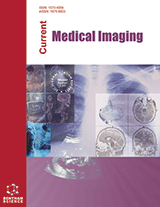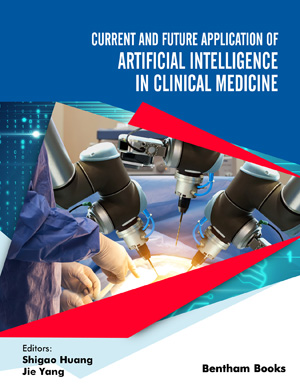
Abstract
Objective: The present study aimed to improve the diagnosis and treatment outcome of cerebrospinal fluid (CSF) rhinorrhea caused by patent meningoencephalocele of Sternberg’s canal of the sphenoid sinus by analyzing the clinical data and imaging features of two rare cases of this disease and by reviewing the relevant literature for possible etiology, diagnoses, and treatments.
Methods: Together with the relevant literature, we retrospectively studied the clinical and imaging data of two patients (mother and child) with CSF rhinorrhea caused by patent meningoencephalocele of Sternberg’s canal of the sphenoid sinus, analyzed their diagnostic and treatment procedures, and proposed a potential, feasible treatment method.
Results: On the 2nd day after surgery, the expansive sponge and iodoform gauze in the nasal cavity were removed in both patients, and the lumbar subarachnoid drainage was removed 3 days after the operation, as no nasal discharge was observed. One week after the operation, head magnetic resonance imaging (MRI) showed that the abnormal tissue in the sphenoid sinus had disappeared, and no accumulation of the CSF was observed. Both patients were discharged after 2 weeks. At the time of discharge, both patients were without nasal drip, fever, headache, and other discomforts, and they had grade 5 muscle strength in their extremities, with normal muscle tension.
Conclusion: CSF rhinorrhea is usually caused by secondary factors. Spontaneous CSF rhinorrhea caused by encephalocele of the skull base due to congenital dysplasia of the skull base is very rare and easily misdiagnosed. The presence of brain tissue or CSF signal in the sphenoid sinus on preoperative MR images is an important imaging feature of the disease. Conditional cisternography can be used to further detect CSF leaks. Endoscopic transnasal transsphenoidal repair of CSF leaks combined with short-term postoperative lumbar subarachnoid drainage is an effective treatment method. According to previous literature, the possible causes of meningoencephalocele with patent Sternberg’s canal of the sphenoid sinus include abnormal development of the sphenoid sinus or the craniopharyngeal canal and bone defects of the skull base. There are no related reports on patent meningoencephalocele caused by Sternberg’s canal in direct blood relatives, such as mother-son; therefore, the possibility of this disease having a genetic origin should be considered in future studies on its pathophysiological mechanisms.
Keywords: Patent Sternberg’s canal of the sphenoid sinus, meningoencephalocele, cerebrospinal fluid rhinorrhea, diagnoses, pathophysiological mechanisms, causal analysis.
[http://dx.doi.org/10.3171/2009.7.JNS0842] [PMID: 19698044]
[http://dx.doi.org/10.4193/Rhin08.236] [PMID: 19936360]
[PMID: 22437302]
[http://dx.doi.org/10.1007/s004050000235] [PMID: 11073192]
[http://dx.doi.org/10.5114/wiitm.2014.47097] [PMID: 26240642]
[http://dx.doi.org/10.3340/jkns.2012.52.6.555] [PMID: 23346329]
[http://dx.doi.org/10.3171/2012.3.FOCUS1267] [PMID: 22655694]
[http://dx.doi.org/10.1097/01.mlg.0000251452.90657.3a] [PMID: 17277632]
[http://dx.doi.org/10.1055/s-2008-1058595] [PMID: 17171030]
[http://dx.doi.org/10.1016/j.amjoto.2006.01.011] [PMID: 17084229]
[http://dx.doi.org/10.4103/2152-7806.90034] [PMID: 22145089]
[http://dx.doi.org/10.4103/2152-7806.106260] [PMID: 23494001]
[http://dx.doi.org/10.1055/s-0033-1334887] [PMID: 23674215]
[PMID: 27349394]
[http://dx.doi.org/10.1259/bjrcr.20160082] [PMID: 30363286]
[http://dx.doi.org/10.1016/j.otoeng.2014.03.006] [PMID: 25052487]
[http://dx.doi.org/10.4103/0028-3886.217954] [PMID: 29133735]
[http://dx.doi.org/10.1007/s12070-019-01715-w] [PMID: 31750115]
[http://dx.doi.org/10.3941/jrcr.v14i8.3761] [PMID: 33088417]
[http://dx.doi.org/10.1177/0145561319846828] [PMID: 31018686]
[http://dx.doi.org/10.3109/00016484709123765]
[http://dx.doi.org/10.1016/0022-510X(72)90123-2] [PMID: 5008718]
[http://dx.doi.org/10.1288/00005537-198701000-00015] [PMID: 3540492]
[http://dx.doi.org/10.1007/BF01406661] [PMID: 3324649]
[http://dx.doi.org/10.1097/00005537-200210000-00018] [PMID: 12368619]
[http://dx.doi.org/10.1007/s00405-016-4125-z] [PMID: 27295175]
[PMID: 10219412]
[http://dx.doi.org/10.1227/01.NEU.0000367619.24800.B1] [PMID: 20305499]
[http://dx.doi.org/10.1016/S1043-1810(03)90018-2]
[PMID: 5147353]
[http://dx.doi.org/10.1007/s00405-014-3049-8] [PMID: 24748381]
[http://dx.doi.org/10.1002/lary.26982] [PMID: 29114899]
[http://dx.doi.org/10.2500/ajra.2009.23.3290] [PMID: 19401043]
[http://dx.doi.org/10.1002/alr.21262] [PMID: 24407877]
[http://dx.doi.org/10.3174/ajnr.A3744] [PMID: 24091443]
[PMID: 10696020]
[http://dx.doi.org/10.1007/s00701-020-04329-2] [PMID: 32372133]
[http://dx.doi.org/10.1093/ons/opaa446] [PMID: 33475703]
[http://dx.doi.org/10.4103/0028-3886.289009] [PMID: 32643695]
[http://dx.doi.org/10.1227/01.neu.0000117127.32806.ec] [PMID: 15088622]
[http://dx.doi.org/10.1227/01.neu.0000065183.05896.9c] [PMID: 12762897]
[http://dx.doi.org/10.1684/epd.2010.0308] [PMID: 20488780]
[http://dx.doi.org/10.1016/j.wneu.2010.01.018] [PMID: 20920939]
[http://dx.doi.org/10.1055/s-2004-818522] [PMID: 15346316]














